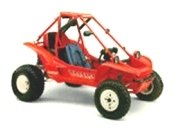cruz_01 wrote:
I took some pics of the spare
Engine being partially torn down to allocate parts needed to complete the 500 Engine. I have to say two tools have proven themselves aiding me in this project. The first tool is the Engine stand. It's really been a lot easier removing parts from the right side crankcase. There were a few times I need to put the Engine on the ground with the stand to apply more torque in certain situations. The second tool that seemed to work well was the gear jammer I got from Motion Pro. The tool did the trick in removing the big nut that holds the sprocket to the crankshaft.
The discoloration of the flywheel normal?
Also, after looking at the mechanical seal, is it safe to reuse again? How can you tell if the seal is worn and should be replaced?
After rebuilding more than 40 Pilot engines I have never once used a Engine stand or the gear holding tool YES I know I have mention NOT NEEDING the Engine stand thing before and how it would just waste my time whilst your bolting the Engine to the case I already have my top end off and am splitting the case's after you remove your top end and start to remove the Engine from the stand I am cleaning and inspecting my entire Engine that is completely disassembled, I am pointing this out again because you word it as if its a MUST to have a Engine stand when people read this in the future I want to ensure they understand its not a must and just a personal preference thing. If ANYBODY has any questions on how to to ANY Pilot Odyssey or ATV Engine without a stand just start another thread and ask Engine stands are NOT REQUIRED in the ATV world.
To remove and install the big nut on the end of the crankshaft I just use my impact and the socket, I keep the crankshaft from spinning by holding the clutch end of the crankshaft with my bare hand, I install the nut the same way, impact and holding the clutch end of the shaft with my hand you watch the nut tighten as you rattle it on with the impact when you see it slow remove the socket you can see where it was torqued too from the factory, line up the mark where it was at the factory, naturally the threads are cleaned and loctite was applied to the threads on both parts before assembly.
The teeth on the flywheel are case harden after they are cut looks like a flame harden process is used.
Red stuff on the end of the flywheel is a thread locker you should see it on the nut also, see the "red" like in your picture on engines rebuilt by ATV Racing also usually see that white silicone sealer looking crap all over the Engine where ever their is a gasket used.
The seal in your red stuff picture is located behind the recoil starter OIL SEAL
(35X52X7) 91201-402-015 that seal ALWAYS leaks its a poor design if you study it it takes a few hours of Engine run time to get oil to the seal, if you grease the lips of the seal before installing it lubricates the seal until the oil shows up this helps a little, I go one step further and grease the seal, install the seal then before installing the recoil basket use my Zoomspout oiler
https://www.google.com/search?q=zoomspo ... 8&oe=utf-8 filled with balancer oil I fill the void between the back of the seal and the Engine case. Look close while apart at the design you will see what I mean, pre lubed then the seal will last, not pre lubed and the seal will weep most its entire life. Replace that seal use my steps to install you will be fine.
You can shorten the spring length on most any seal by removing the spring from the seal look close you can see where the spring is joined together you simply unscrew the spring too take it apart then you can shorten its length by cutting off the non tapered end of the spring then screw it back together this will put more tension on the seal and make it tighter on the shaft, how much to shorten is just a wild ass guess you can see the engineered length to get the proper tension when you take it apart







